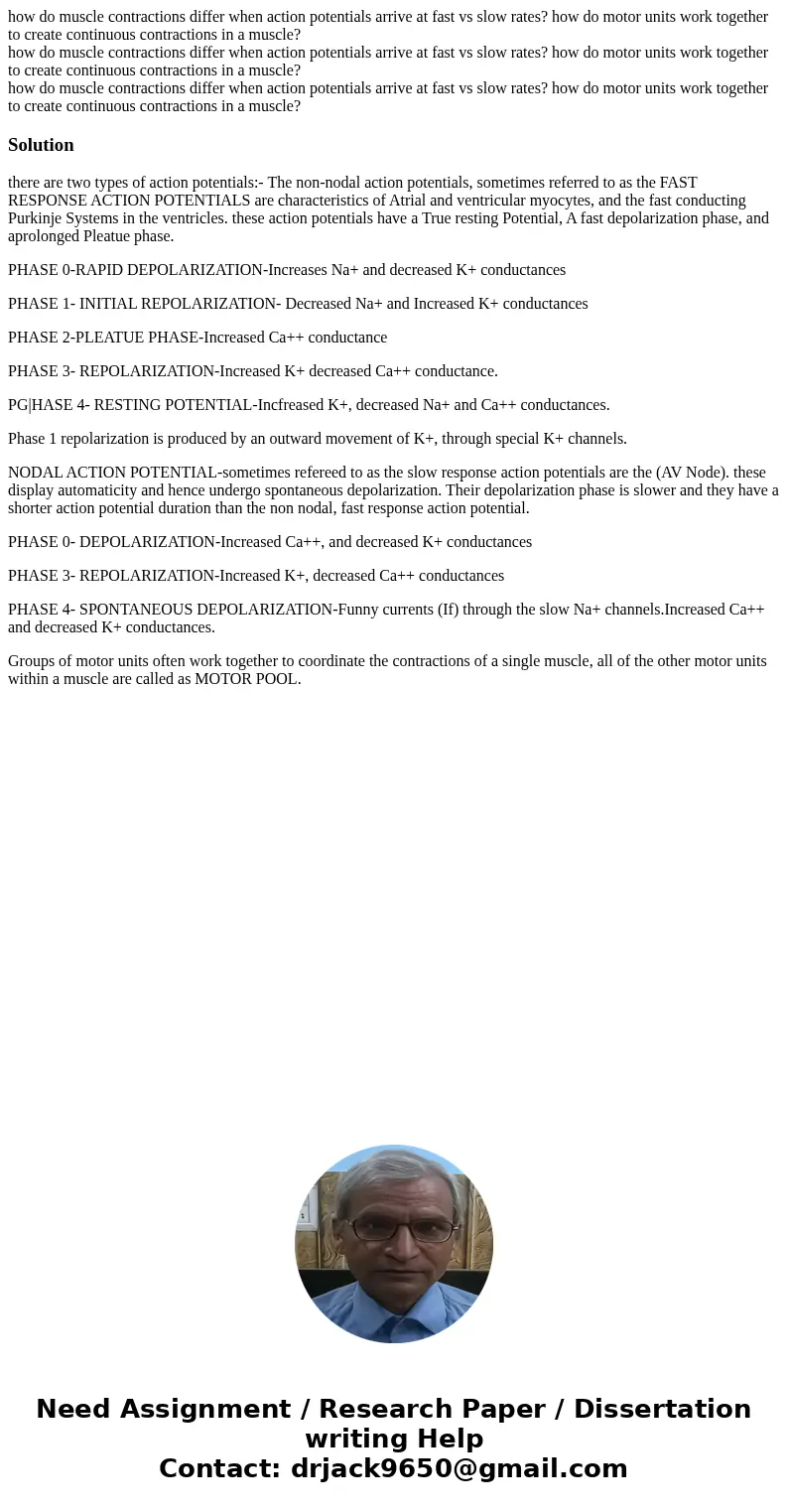how do muscle contractions differ when action potentials arr
Solution
there are two types of action potentials:- The non-nodal action potentials, sometimes referred to as the FAST RESPONSE ACTION POTENTIALS are characteristics of Atrial and ventricular myocytes, and the fast conducting Purkinje Systems in the ventricles. these action potentials have a True resting Potential, A fast depolarization phase, and aprolonged Pleatue phase.
PHASE 0-RAPID DEPOLARIZATION-Increases Na+ and decreased K+ conductances
PHASE 1- INITIAL REPOLARIZATION- Decreased Na+ and Increased K+ conductances
PHASE 2-PLEATUE PHASE-Increased Ca++ conductance
PHASE 3- REPOLARIZATION-Increased K+ decreased Ca++ conductance.
PG|HASE 4- RESTING POTENTIAL-Incfreased K+, decreased Na+ and Ca++ conductances.
Phase 1 repolarization is produced by an outward movement of K+, through special K+ channels.
NODAL ACTION POTENTIAL-sometimes refereed to as the slow response action potentials are the (AV Node). these display automaticity and hence undergo spontaneous depolarization. Their depolarization phase is slower and they have a shorter action potential duration than the non nodal, fast response action potential.
PHASE 0- DEPOLARIZATION-Increased Ca++, and decreased K+ conductances
PHASE 3- REPOLARIZATION-Increased K+, decreased Ca++ conductances
PHASE 4- SPONTANEOUS DEPOLARIZATION-Funny currents (If) through the slow Na+ channels.Increased Ca++ and decreased K+ conductances.
Groups of motor units often work together to coordinate the contractions of a single muscle, all of the other motor units within a muscle are called as MOTOR POOL.

 Homework Sourse
Homework Sourse